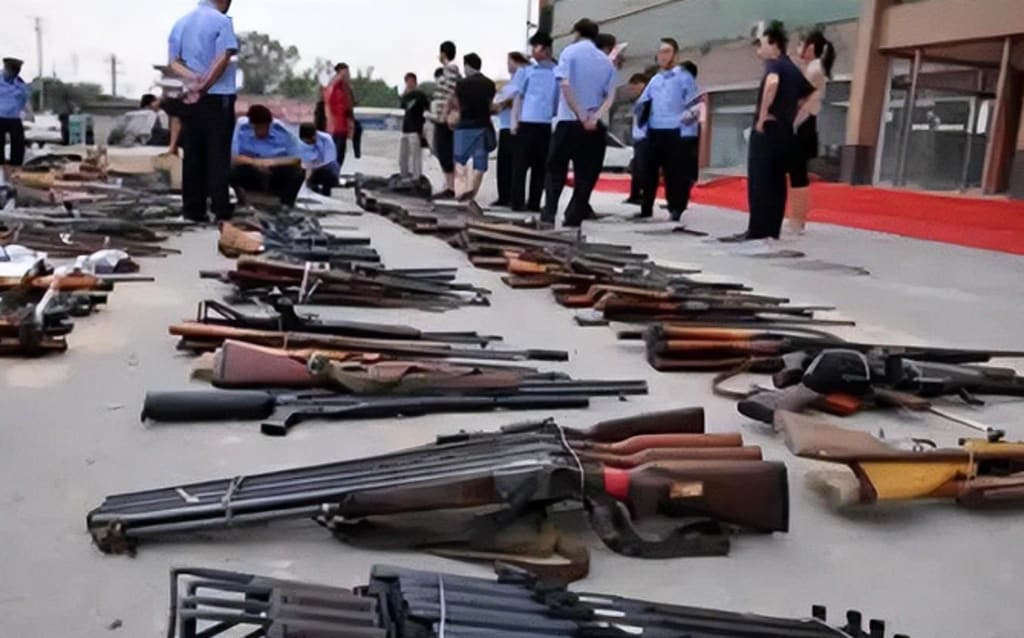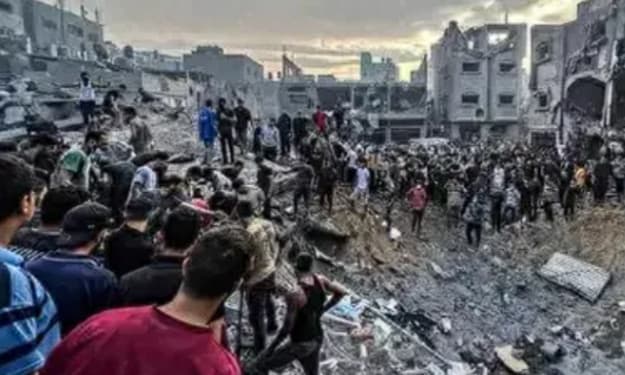"Why does China ban firearms? In 1993, a dispute between two villages in Hunan escalated into a conflict that resembled warfare, involving 5,000 people in a melee that lasted for 34 hours."
ahong

On September 11, 1993, a historically unprecedented and massive armed conflict broke out between two neighboring villages in Hunan Province, with more than 5,000 villagers involved. The entire village was almost transformed into a miniature modern battlefield, complete with infantry and artillery coordination and the implementation of tactical formations such as the "three-three system."
The nationwide gun ban in China is closely related to this "battle." The roots of the deep-seated grievances between the two villages can be traced back to the 1920s during the Republic of China era. A Nationalist Party officer from Matian village, known for his arrogance and bullying, sought personal gain by leading a troop of soldiers to massacre 27 villagers in the neighboring Jinggang village and seized a large area of fertile land from them. This act sowed the seeds of a grudge that deepened over the decades.
The dispute over the sale of a pot of lard ignited the long-standing hatred between the two villages. On September 11, 1993, at the command of the village heads, all the men in the village armed themselves with a determination for revenge. The villagers' arsenals were astonishing, with a large number of cannons, gunpowder barrels, homemade guns, grenades, and even fierce lethal weapons like explosive packs, indicating their determination to settle scores once and for all.
The village heads of both villages had elevated the conflict to a new level. They did not just gather the villagers in disarray but made meticulous strategic deployments. Jinggang village occupied the commanding high ground on the left side of the mountain, while Matian village set up a watchtower on the roof of a civilian house, with both sides laying an impenetrable web of firepower.
After 2 o'clock, both sides fired shells and bullets at each other based on their positions, and the sound of gunfire and artillery resonated throughout the valley. As the conflict entered its later stages, the scale of the fighting between the two sides expanded sharply. Initially, only the young and strong men of the villages were mobilized, but at this point, even the elderly and women were recruited, carrying supplies back and forth through the firing zone.
Soon, the total number of mobilized people in both villages exceeded 5,000. Many villagers' houses were pierced by stray bullets, and some were disfigured by flying debris from explosions. Both sides, which were once in a stalemate, were tirelessly looking for each other's weaknesses.
After 34 hours, the ammunition on both sides was running out, and when everyone was exhausted, the higher authorities finally sent a large number of armed police to quell the situation. In this way, the shocking rural war in Hunan was finally brought to an end.
At the beginning of the incident, the local police never imagined that such an unprecedentedly large-scale armed conflict would break out between the two small villages, and thus their preparations were far from sufficient. The police force initially dispatched could not get close to the firing zone and had to give up. They had to immediately ask for help from higher authorities, seeking more military intervention.
Soon, the county, city, and provincial governments all paid attention to this situation and quickly dispatched thousands of armed police to the scene, ready to forcibly quell the unrest. However, even with such a strong force, facing the obstruction of more than 5,000 armed villagers from both villages, the armed police were also at a loss.
They first tried to persuade both sides to cease fire, but the villagers of both sides were only focused on retaliation and sweeping the enemy's village, turning a deaf ear to the government's persuasion, and even firing at the armed police personnel, causing the scene to become very chaotic.
The armed police were eventually forced to take tough measures: they fired tear gas and subdued them when the personnel on both sides were caught off guard. After the incident, they successfully confiscated a large number of illegal weapons from both sides, including 95 homemade cannons, 57 homemade guns, 233 kilograms of explosives, and so on.
Looking back on the entire event, there were obviously serious deficiencies and omissions in the initial handling by local governments and police. They could not imagine that such a large-scale armed conflict would break out between two small villages, and thus their preparations were far from sufficient.
If similar large-scale group fights occur in other villages, they are completely unable to deal with them independently and can only ask for the intervention of heavy armed forces such as the armed police. This is a very undesirable and passive approach, which can easily lead to more serious bloody incidents.
The armed police's handling methods are worth affirming. They first adhere to the bottom line and repeatedly patiently persuade the villagers to lay down their weapons, striving to resolve the issue peacefully.
It was not until they saw the villagers' attitude was tough and unwilling to concede, threatening the personal safety of the on-site personnel, that they were forced to take tactical measures to subdue them. Tear gas is undoubtedly a more humane and mild method.
In general, this incident once again sounded the alarm bell, reminding everyone that any contradictions and conflicts should be resolved in a rational, restrained, and non-violent manner. Large-scale bloody incidents are extremely detrimental to the construction of a harmonious society, wasting resources and potentially leading to greater conflicts.
About the Creator
ahong
I'm Ahong, a writer painting China's stories for the world. Dive into tales that blend tradition with the contemporary, right from the heart of China.
Enjoyed the story? Support the Creator.
Subscribe for free to receive all their stories in your feed. You could also pledge your support or give them a one-off tip, letting them know you appreciate their work.






Comments
There are no comments for this story
Be the first to respond and start the conversation.